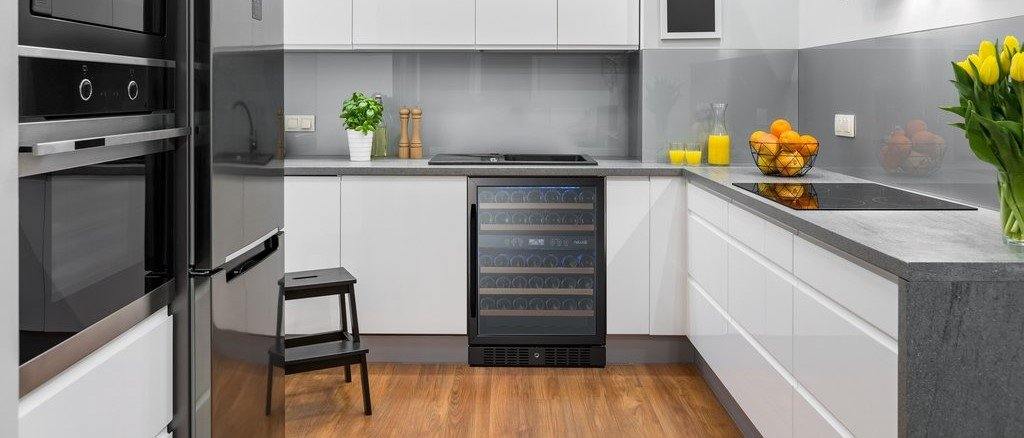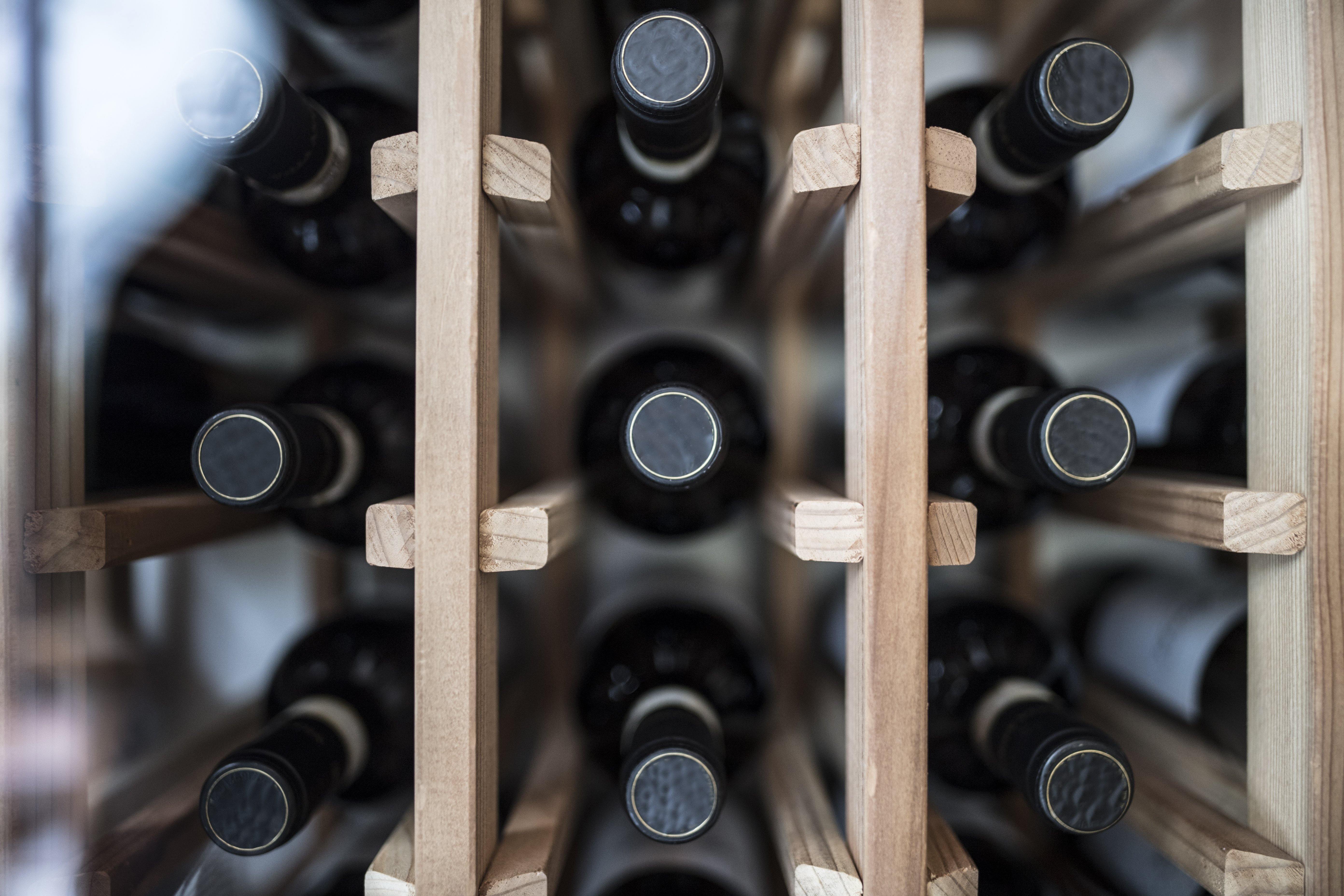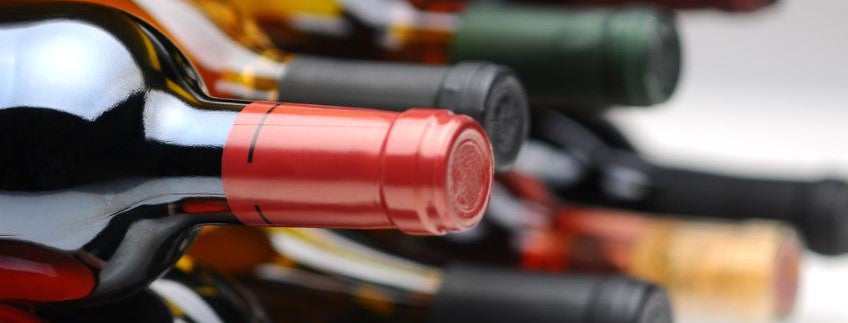Can You Freeze Wine?
Have you ever been tempted to freeze leftover wine as a way of preserving its taste? Or maybe you actually did put some white wine in your freezer to chill briefly, and then forgot all about it. Especially if the weather is hot, the idea of frozen wine can sound pretty enticing - but you probably haven’t wanted to experiment with a nice bottle of wine. Here’s what you need to know about freezing wine.
Technical Details
First, we’ll talk about what’s physically possible when it comes to freezing wine, and then we’ll discuss what’s actually advisable.
Alcohol Content
A liquid that’s more than 8 percent alcohol by volume won’t freeze solid in a home freezer. The alcohol content of wine ranges between about 12 and 16 percent alcohol, with light whites like Portuguese Vinho Verde at the low end and rich California reds like Zinfandel at the high end. Because they’re all over 8 percent, they won’t freeze solid; instead, you’ll get a sort of wine slushie. The reason for this is that pure ethanol alcohol has a freezing point of -173 degrees Fahrenheit. Since your home freezer doesn’t reach such a low temperature, what happens is that the alcohol and water content in the wine each react differently. The water portion of the wine will freeze, while the alcohol will stay liquid and become more concentrated.
Bottles can Break
If you dig out that frozen bottle of special California wine that you accidentally left in the freezer, you’re likely to find that it has pushed its cork up, or broken the airtight seal and leaked out of its screw cap. That’s because the volume of water increases when it freezes, so the half-frozen wine couldn’t still fit in its bottle. Champagne has an even more exciting response to being frozen: Because the cap is held on with a wire cage, there’s no room for the freezing water to expand -- so the entire bottle will explode. After picking glass shards out of your freezer, you’re not likely to make that mistake again! If you’re determined to freeze some wine, you can avoid the bottle problems by pouring it into an ice cube tray. However, the resulting wine cubes won’t be as hard as ice cubes, and they may fall apart when you remove them from the tray.
Flavors Deteriorate
Unlike fruit juices and other foods, which can stay fresh tasting during long term frozen storage, wine doesn’t do well during freezing and thawing. Sarah Cabot, an Oregon winemaker specializing in Pinot Noir, explains why: “The delicate aromatics are easily released through extreme temperature change, never to be gotten back.” Getting deeper into technicalities, she continues: “When you freeze things, chemical reactions happen. The organoleptic (sensory) character of the wine will be altered by freezing, in a way that will make the wine less enjoyable. The nuances of bouquet will be lost.” With red wine, she adds, the tartaric acid that is suspended in solution will precipitate out and form crystals at the bottom of the bottle. While the process of cold stabilization makes the flavor of white wine somewhat less vulnerable to deterioration from freezing, Cabot still discourages treating any good wine in such a way.
Fun Wine Mixers are a Whole Other Question
Setting aside the serious art of the winemaking process and the living subtlety of fine wines, there’s nothing wrong with some lighthearted Friday night fun. If you have an open bottle of wine that’s been hanging out on your kitchen counter for a week, it’s a perfect candidate for making into some fruity wine popsicles or busted slushie wine cocktails. If you create a 50/50 mix of wine and fruit juice, you’ve brought the overall alcohol content down below the 8 percent level, and you can freeze it into regular hard popsicles. These refreshing treats can add sparkle to a summer pool party or evening barbecue.
You can also create appealing wine freeze recipes for more formal occasions, as a whole new approach to food pairing. Here’s a classic recipe to get you started: Heat some fresh raspberries for a minute until they release their juice, cool them, and mix with an equal volume of champagne. This luscious mixture can be frozen in muffin tins and served in glass dishes as a stylish Raspberry Granita. The pale pink flaky ice makes a beautiful palate cleanser or light dessert. Frozen rosé and fruit mixtures are also popular, and this how-to video by Bon Appetit takes you through the preparation step by step. If you have an abundance of soft fruit, grab a cheap bottle of California Cabernet at Costco, and get creative with your blender... you can come up with infinite variations on frozen sangria.
When it’s All About the Wine
If you collect wines that are important to you, you want to be able to maintain them for an extended period of time. With exciting wine regions in New York, Oregon and California, Americans have some of the world’s best vintages available at the nearest wine shop. Obviously your freezer door is not the right place for any of those special bottles... so what are your options? Proper storage is one of the most frequently asked questions by wine consumers. The answer depends on the type of wine, of course, but here’s a brief review:
Red Wine
You’ve probably heard that red wines do best when kept at “room temperature,” but what does that actually mean? Our homes are often 70 degrees or warmer, especially in summer, but that’s too warm to properly preserve a fine wine. The ideal storage temperature for red wine is 55 degrees F, although you don’t have to be exact about it. Anything between 45 and 65 degrees will be fine for most people’s needs; precision isn’t crucial unless you’re aging wine for many years. If you do like being precise, however, a dedicated wine fridge can keep your collection at whatever temperature setting you choose.
White Wine
White wines and sparkling wines are refreshing when served quite cold, but their flavors will start to flatten out if you store them below 45 degrees for any length of time. Your refrigerator probably maintains low temperatures of 35 to 40 degrees for optimum food storage, so it’s not ideal for storing wine. Many white wine lovers take advantage of a wine refrigerator dual zone available in wine and beverage coolers so that they can keep their white wine bottles at exactly 45 degrees. Serving white wine in cold glasses can also maintain its temperature while drinking.
Humidity
At first glance, it may seem odd that humidity is relevant to wine storage since the wine is in a glass bottle. The cork is what’s susceptible to overly dry environments, however, because if it dries out it can shrink and allow air to enter the bottle. This is a quick route to spoiling a valuable wine. A dry cork can also crumble into bits when it’s being removed. While the classic humidity for wine storage is 70 percent, you’ll be fine with anything above 50 percent. Again, you don’t have to be precise about the exact humidity unless you’re aging wines for ten years or more. If you live in a very dry location, however, or if air conditioning dries out your home in the summer, it can be difficult to maintain 50 percent humidity for wine that’s out on an open rack on a counter. A wine cooler can shelter wine in its own mini-environment. You can simply place a small container of water inside your wine cooler and be confident that your wines are being maintained at an optimum humidity level.
UV Light
Sunlight is another environmental element that can deteriorate good wine. Green bottles provide some protection against UV light rays, but they definitely don’t take care of the entire issue. If you have your wine out on a countertop wine rack, you should make certain that it’s not in a place where sunlight can reach it. Even fluorescent light bulbs emit small amounts of UV light. This is why serious wine collectors keep their wine cellars dark, or put their wine into a dedicated refrigerator. Wine coolers come special UV-resistant glass doors, allowing you to see your collection without exposing the bottles to light.
Aging Wine
The vast majority of wines, red as well as white, are made to drink immediately upon purchase. If you want to delve deeply into wine collecting, you may want to learn more about the structure of wines, and about which classic vintages improve with time. This tutorial on aging wine by Madeline Puckette is outstanding, and will get you started on becoming a true connoisseur.
Understanding the reasons and limitations behind wine storage lets you make the right choice for your lifestyle: You can use your kitchen freezer to produce the occasional fun wine-fruit slushy, while you can rely on a wine cooler to properly preserve the character of wines you want to savor.





0 comments